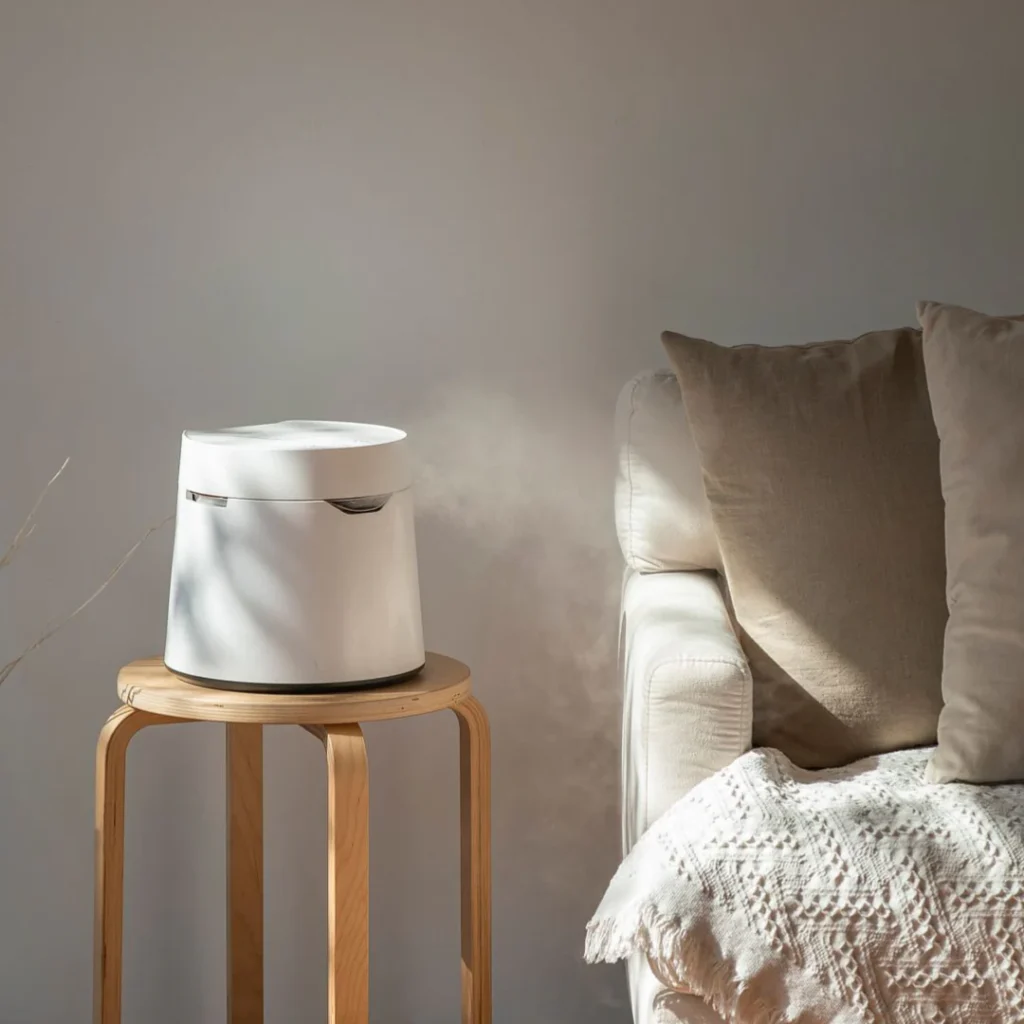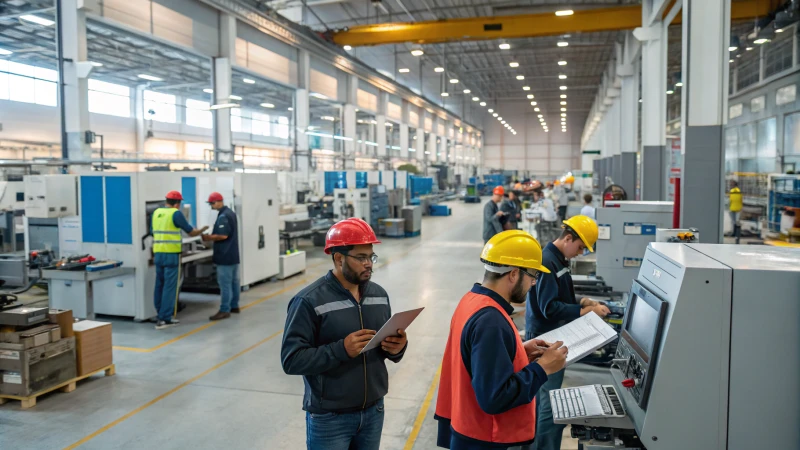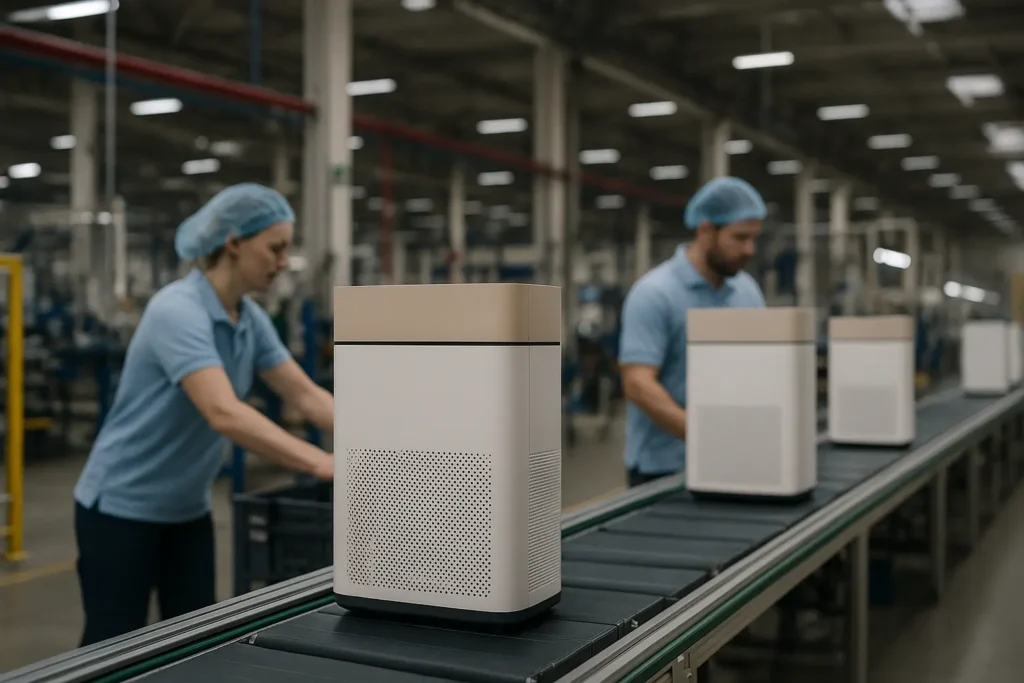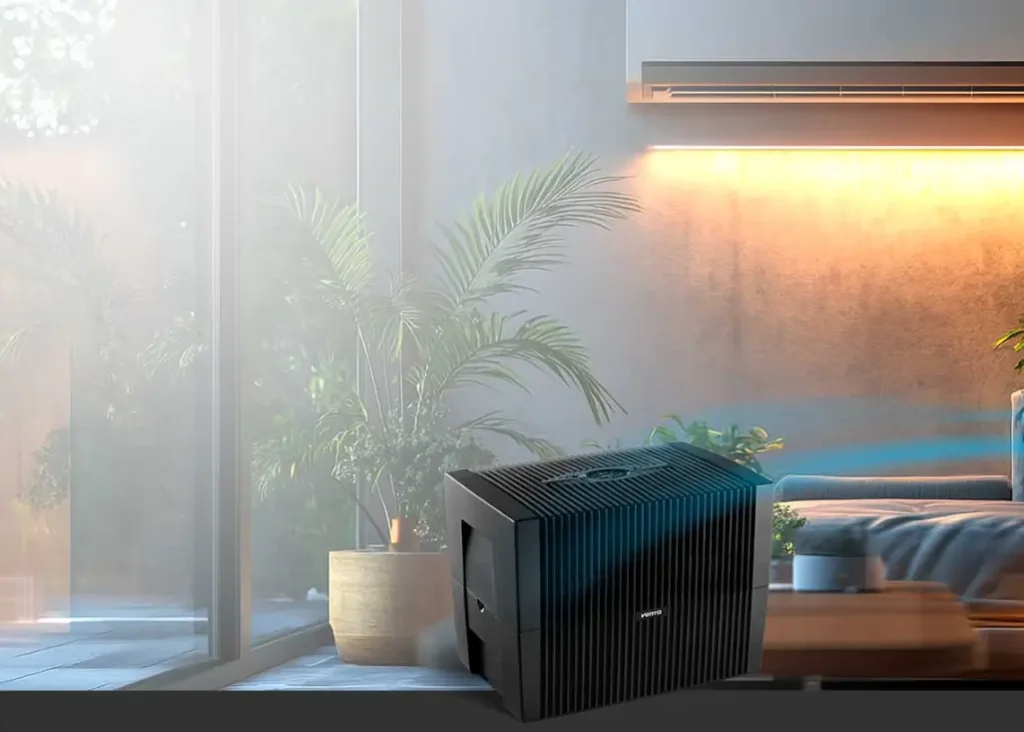
O início da pandemia de COVID-19 colocou os purificadores de ar no centro das atenções, transformando-os de um produto de nicho numa necessidade doméstica.
A pandemia de COVID-19 provocou um aumento da procura de purificadores de ar, uma vez que os consumidores procuravam proteger a qualidade do ar interior contra os vírus transportados pelo ar. Isto levou a um aumento da concorrência, com muitas marcas novas a entrar no mercado, embora algumas tenham enfrentado desafios após a pandemia.
Embora o aumento imediato da procura tenha diminuído, o impacto da pandemia na sensibilização dos consumidores para a qualidade do ar continua a ser significativo. Este blogue explora a forma como a dinâmica do mercado se alterou e o que o futuro reserva para os purificadores de ar.
A COVID-19 aumentou a procura de purificadores de ar devido a preocupações com a saúde.Verdadeiro
A pandemia aumentou a sensibilização para a qualidade do ar interior, impulsionando as vendas.
Que factores impulsionaram o aumento da procura de purificadores de ar durante a COVID-19?
Com a propagação da COVID-19 a nível mundial, os purificadores de ar registaram uma procura sem precedentes, reflectindo uma mudança nas prioridades dos consumidores.
Durante a pandemia da COVID-19, as preocupações acrescidas com a saúde e o aumento do tempo passado em espaços interiores impulsionaram significativamente a procura de purificadores de ar. Os consumidores tornaram-se mais conscientes da qualidade do ar interior, o que levou a um aumento das vendas, uma vez que as pessoas procuraram mitigar o risco de transmissão do vírus pelo ar.
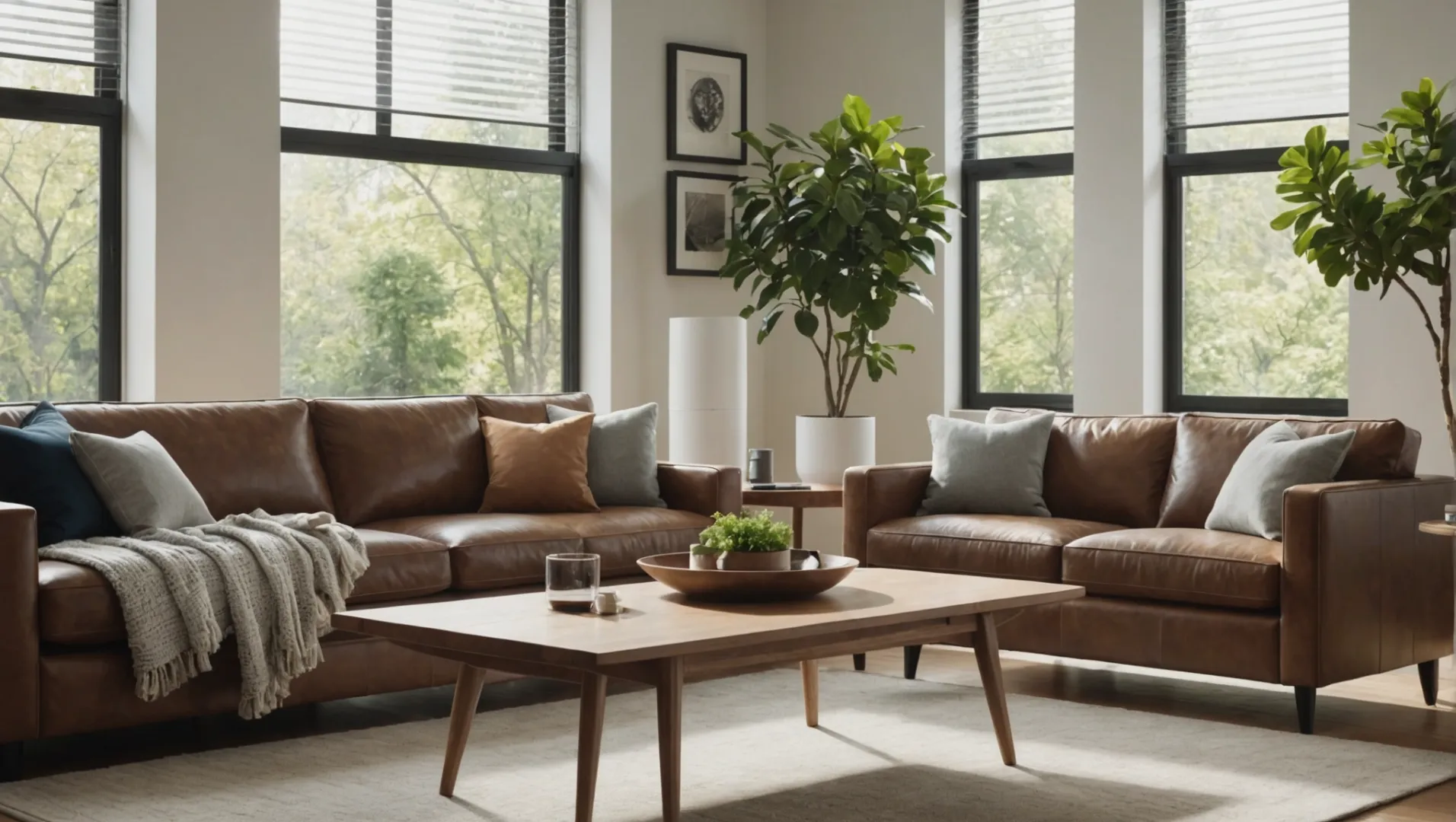
Maiores preocupações com a saúde e proteção contra vírus
Com o início da pandemia da COVID-19, as pessoas tornaram-se extremamente conscientes dos perigos colocados pelos vírus transportados pelo ar. Consequentemente, verificou-se um aumento acentuado da procura de produtos que pudessem reduzir potencialmente a exposição a estes agentes patogénicos. Os purificadores de ar, que podem filtrar as partículas transportadas pelo ar, tornaram-se rapidamente populares como medida preventiva contra a transmissão de vírus. A procura foi particularmente acentuada nas zonas urbanas, onde a densidade populacional é elevada e a ventilação dos edifícios pode ser insuficiente.
Aumento das melhorias no ambiente doméstico
A pandemia obrigou muitas pessoas a passar mais tempo em casa devido ao confinamento e ao trabalho à distância. Esta mudança levou a uma maior concentração na melhoria dos ambientes domésticos. Os consumidores começaram a investir em produtos que podiam melhorar a qualidade do ar interior, como os purificadores de ar. O aumento das actividades domésticas também resultou em mais poluentes interiores, como os provenientes da cozinha e da limpeza, tornando os purificadores de ar uma opção atractiva.
Concorrência de mercado e proliferação de marcas
O aumento da procura atraiu muitos novos operadores para o mercado, aumentando significativamente a concorrência. Uma grande variedade de novas marcas lançou purificadores de ar, cada uma alegando benefícios únicos ou tecnologias avançadas. Esta concorrência intensa impulsionou a inovação, mas também levou à saturação do mercado. Algumas marcas prosperaram oferecendo produtos superiores ou estratégias de marketing eficazes, enquanto outras lutaram para manter a quota de mercado após a pandemia.
| Factores-chave | Impacto na procura |
|---|---|
| Preocupações com a saúde | Maior sensibilização e medidas preventivas |
| Qualidade do ar interior | Melhoria do ambiente doméstico devido à permanência prolongada em casa |
| Concorrência de mercado | Proliferação de marcas e inovação |
Implicações futuras e tendências emergentes
Mesmo quando o pânico imediato desaparece, a maior consciencialização sobre a qualidade do ar interior mantém-se. É provável que esta consciencialização sustente a procura nos sectores do bem-estar e da saúde, especialmente porque os consumidores continuam a procurar soluções para remover não só os vírus, mas também o fumo, os odores e os compostos orgânicos voláteis (COV). O potencial de futura legislação governamental destinada a regular as normas de qualidade do ar, como a fixação de valores mínimos de Trocas de Ar por Hora (ACH), poderá influenciar ainda mais a dinâmica do mercado.
Para saber mais sobre a forma como os hábitos dos consumidores mudaram após a pandemia e o que isso significa para o mercado dos purificadores de ar, poderá consultar evolução da consciencialização dos consumidores1 e como as políticas governamentais poderão ter impacto2 procura futura.
Os purificadores de ar reduzem o risco de transmissão de vírus pelo ar.Verdadeiro
Os purificadores de ar filtram as partículas, reduzindo potencialmente a exposição ao vírus.
A procura de purificadores de ar diminuiu durante a pandemia de COVID-19.Falso
A procura aumentou devido a preocupações acrescidas com a saúde e com o tempo de permanência em espaços interiores.
Como é que a entrada de novos operadores no mercado alterou o panorama competitivo?
A pandemia de COVID-19 assistiu a uma inundação de novas marcas no mercado dos purificadores de ar, alterando significativamente o panorama competitivo.
Os novos operadores que entraram no mercado durante a pandemia de COVID-19 aumentaram a concorrência no sector dos purificadores de ar, conduzindo a preços mais baixos e a mais inovação, mas também resultando na falência de algumas empresas após a pandemia.
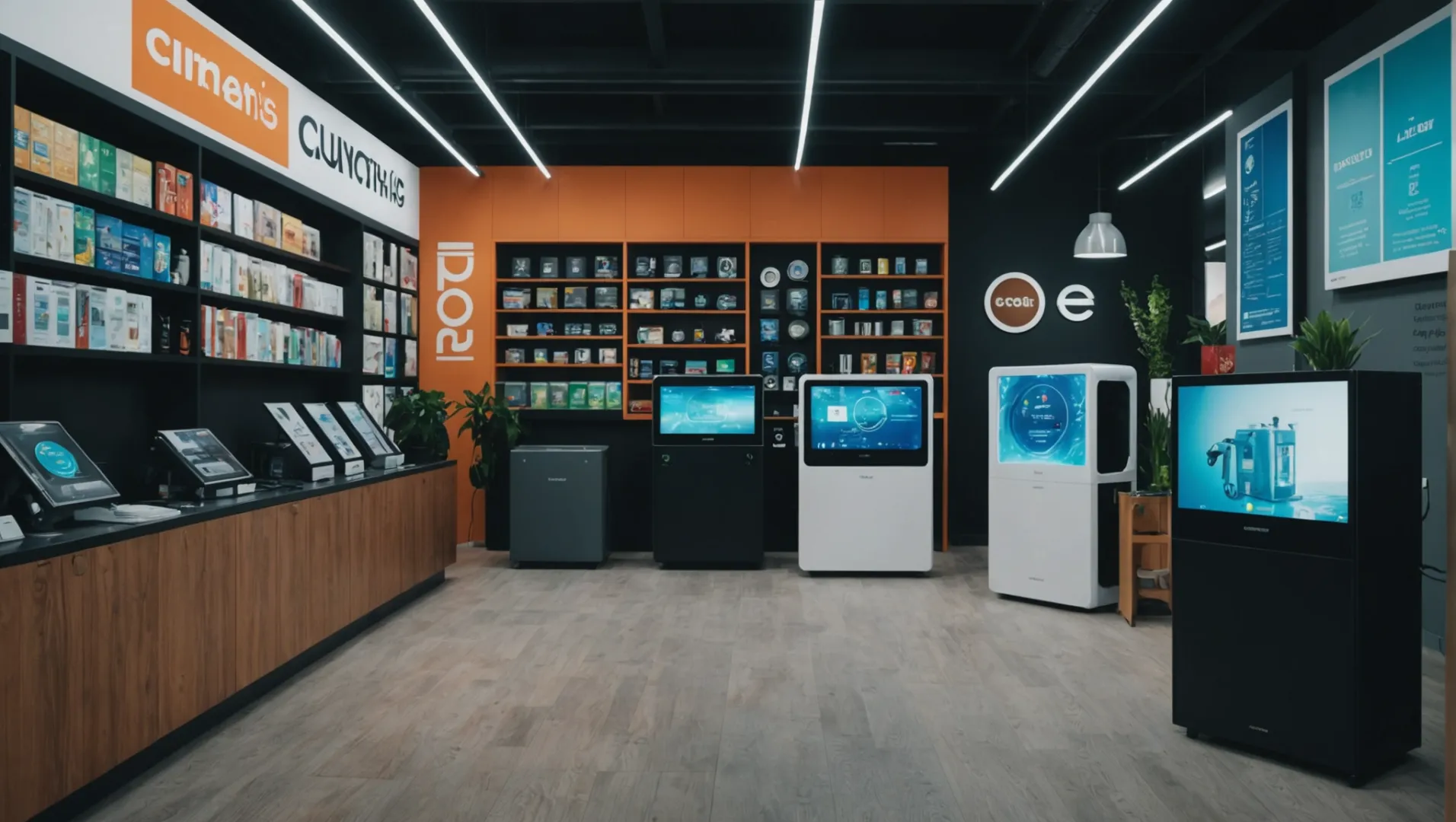
O impacto da pandemia na entrada no mercado
O mercado dos purificadores de ar registou um crescimento sem precedentes durante a pandemia de COVID-19, à medida que as pessoas se tornaram mais conscientes da qualidade do ar interior. Com uma procura em expansão, muitas novas empresas entraram no mercado. Este afluxo de novos participantes levou a um ambiente hiper-competitivo3 que alterou drasticamente a dinâmica do mercado.
A ascensão da concorrência e da inovação
Com inúmeras marcas a disputar a atenção dos consumidores, a concorrência tornou-se feroz. Este facto não só fez baixar os preços, como também incentivou a inovação. As empresas foram obrigadas a melhorar as caraterísticas dos produtos, tais como maiores capacidades de filtragem, funcionamento mais silencioso e integração de tecnologia inteligente.
Uma comparação exaustiva de factores-chave, como o preço, a tecnologia e as classificações dos consumidores, mostrou como a concorrência impulsionou os avanços:
| Fator | Pré-pandemia | Durante a pandemia | Pós-pandemia |
|---|---|---|---|
| Preço médio | Elevado | Inferior | Estabilizado |
| Taxa de inovação | Moderado | Elevado | Sustentado |
| Visibilidade da marca | Poucos líderes | Muitas marcas novas | Alguma consolidação |
Desafios pós-pandémicos e consolidação do mercado
Apesar do boom inicial, nem todos os novos operadores conseguiram manter a sua atividade após a pandemia. À medida que a procura normalizou, as empresas sem um forte apoio financeiro ou produtos inovadores tiveram dificuldade em manter a sua quota de mercado. Esta situação deu origem a vários falências e saídas4 do mercado.
No entanto, esta fase também abriu caminho para a consolidação, em que as marcas estabelecidas adquiriram ou se fundiram com empresas mais pequenas. A consolidação ajudou a estabilizar o mercado e preparou o terreno para o crescimento a longo prazo, à medida que a indústria dos purificadores de ar continua a evoluir.
O papel da consciencialização dos consumidores
A maior sensibilização para a qualidade do ar persiste, mantendo a procura relativamente elevada mesmo após a pandemia. Os consumidores esperam agora mais dos seus purificadores de ar para além da simples remoção de vírus. Caraterísticas como a eliminação de odores e fumo, juntamente com COV (compostos orgânicos voláteis), são cada vez mais procurados.
A ênfase contínua no bem-estar e na saúde é suscetível de assegurar um interesse sustentado nos purificadores de ar, especialmente com legislação prevista5 em regiões como os EUA que promovem normas de qualidade do ar mais rigorosas.
Novas marcas baixaram os preços dos purificadores de ar durante a COVID-19.Verdadeiro
O aumento da concorrência levou a uma redução dos preços, uma vez que as empresas competiam pelos consumidores.
Todas as novas empresas de purificadores de ar prosperaram após a pandemia.Falso
Muitos dos novos operadores tiveram dificuldades após a pandemia, o que levou à falência e à saída da empresa.
Que papel desempenhará a legislação governamental na procura futura?
A legislação governamental poderá ser um fator essencial para moldar a procura futura de purificadores de ar, especialmente com novos regulamentos no horizonte.
A legislação governamental, como os regulamentos previstos nos EUA que obrigam a seis mudanças de ar por hora (ACH) em espaços fechados, deverá impulsionar significativamente a procura de purificadores de ar. Estas medidas regulamentares têm como objetivo garantir uma melhor qualidade do ar interior, influenciando tanto o comportamento dos consumidores como a dinâmica do mercado.
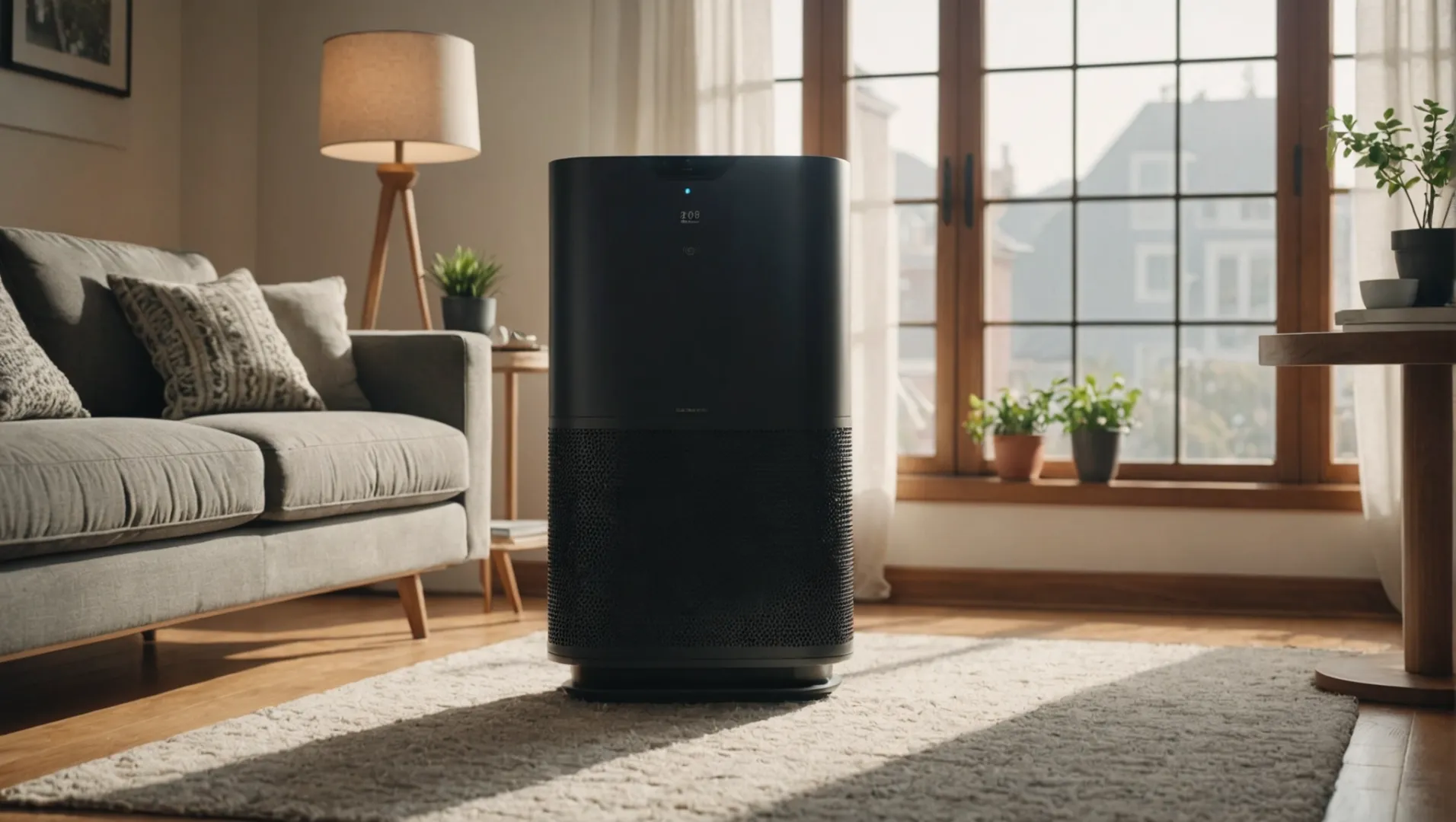
Compreender o impacto dos regulamentos relativos à qualidade do ar
O papel da legislação governamental na procura futura de purificadores de ar não pode ser subestimado. Um exemplo proeminente é a futura regulamentação dos EUA que obriga a seis renovações de ar por hora (ACH) em espaços fechados. Este regulamento faz parte de uma iniciativa mais ampla para melhorar as normas de qualidade do ar interior na sequência de uma maior sensibilização para a pandemia de COVID-19.
O Troca de ar por hora (ACH)6 mede a frequência com que o ar é substituído num determinado espaço. Ao impor uma norma mínima, o governo tem como objetivo melhorar os resultados em termos de saúde, reduzindo os contaminantes transportados pelo ar. Espera-se que este regulamento impulsione a procura de purificadores de ar mais eficientes e de maior capacidade, capazes de cumprir estas novas normas.
O efeito de cascata no mercado
Com a aplicação destes regulamentos, é provável que os sectores comercial e residencial sofram uma mudança. As empresas, as escolas e os estabelecimentos de saúde terão de cumprir estas normas, o que poderá levar a compras em massa de purificadores de ar conformes. Esta medida legislativa poderá também conduzir a inovações na tecnologia de purificação do ar, uma vez que os fabricantes se esforçam por cumprir as novas normas de eficiência.
Implicações globais mais vastas
Embora a legislação dos EUA possa estabelecer um precedente, é provável que outros países sigam o exemplo, adoptando normas semelhantes. À medida que aumenta a consciencialização global para as questões da qualidade do ar, os mercados internacionais poderão assistir a um aumento da procura de produtos que cumpram estas normas rigorosas. Isto poderá abrir novas oportunidades de exportação para os fabricantes que se adaptarem rapidamente a estes requisitos regulamentares.
Potenciais desafios e considerações
No entanto, existem potenciais desafios. Os custos de conformidade podem ser um fardo para as pequenas empresas ou organizações com orçamentos limitados. Além disso, poderá ser necessário efetuar campanhas de educação pública para garantir que tanto os consumidores como as empresas compreendam a importância e os benefícios de aderir a estas normas.
Em conclusão, embora a legislação governamental possa parecer inicialmente pesada, pode atuar como um catalisador para a inovação e o crescimento no mercado dos purificadores de ar. À medida que avançamos para normas de qualidade do ar mais rigorosas a nível mundial, mantermo-nos informados e adaptáveis será fundamental tanto para os consumidores como para as partes interessadas do sector.
Os regulamentos dos EUA exigirão seis ACH em espaços fechados.Verdadeiro
O regulamento americano previsto exigirá seis mudanças de ar por hora.
Os custos de conformidade não afectarão as pequenas empresas.Falso
As pequenas empresas podem ter dificuldades em suportar os custos do cumprimento das novas normas.
Como evoluiu a sensibilização dos consumidores para a qualidade do ar após a pandemia?
A pandemia de COVID-19 aumentou a sensibilização global para a qualidade do ar, transformando-a numa grande preocupação pública.
Após a pandemia, a sensibilização dos consumidores para a qualidade do ar aumentou significativamente. As pessoas reconhecem agora a importância dos purificadores de ar não só para a remoção de vírus, mas também para a eliminação de poluentes como odores, fumo, partículas e COV.
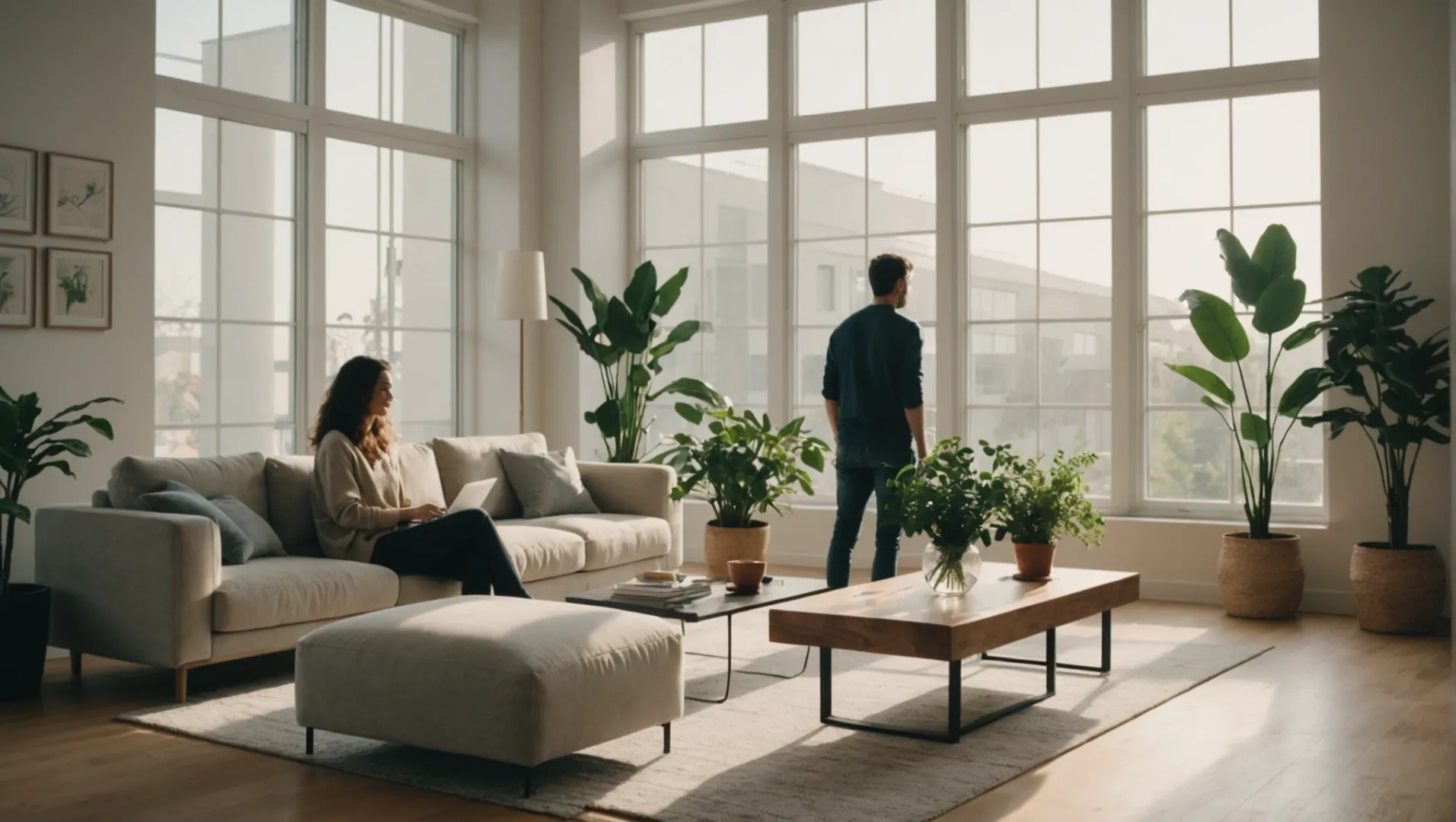
A mudança de perceção
Antes da pandemia, a qualidade do ar poderia ter sido um assunto secundário para muitos. No entanto, como os confinamentos enfatizaram a importância de ambientes interiores saudáveis, as pessoas começaram a considerar o que respiram nas suas próprias casas. Esta consciência reforçada7 persistiu para além do pico da pandemia.
Influência dos meios de comunicação e da informação
O aumento da cobertura mediática durante a pandemia desempenhou um papel crucial na educação do público sobre a qualidade do ar. Os relatórios que destacam os riscos potenciais da má circulação do ar e dos agentes patogénicos transportados pelo ar influenciaram o comportamento dos consumidores. Atualmente, as pessoas procuram ativamente informações sobre como manter o ar limpo, o que impulsiona ainda mais a procura de purificadores de ar de alta qualidade.
Alargar as preocupações para além dos vírus
Embora inicialmente motivadas pela proteção contra vírus, as preocupações dos consumidores expandiram-se para incluir outros factores de qualidade do ar. As pessoas estão agora conscientes dos riscos colocados por partículas em suspensão8Os poluentes orgânicos voláteis (COV) e outros poluentes. Esta mudança está a conduzir a uma abordagem mais abrangente da gestão do ar em recintos fechados.
| Tipo de poluente | Fontes comuns | Impactos na saúde |
|---|---|---|
| Partículas em suspensão (PM) | Fumo, poeira, pólen | Problemas respiratórios, doenças cardíacas |
| COVs | Tintas, produtos de limpeza | Dores de cabeça, lesões hepáticas |
| Odores | Cozinhar, animais de estimação | Desconforto, náuseas |
O papel da legislação
Prevê-se que as futuras regulamentações governamentais reforcem esta tendência. Nos Estados Unidos, a legislação que está a ser elaborada exige seis mudanças de ar por hora (ACH) poderá tornar os purificadores de ar uma parte ainda mais integrante das casas e dos escritórios. Isto reflecte um reconhecimento crescente, a nível político, do impacto da qualidade do ar na saúde pública.
Um fenómeno global
O aumento da consciencialização não se limita a uma região, mas estende-se a todos os continentes. Com os meios de comunicação internacionais a partilharem ideias e investigações, os consumidores de todo o mundo estão a exigir melhores soluções para as suas necessidades em matéria de qualidade do ar interior. Esta tendência global sugere uma mudança permanente na forma como a qualidade do ar é percepcionada e considerada prioritária na vida quotidiana.
A sensibilização para a qualidade do ar aumentou após a pandemia.Verdadeiro
A pandemia pôs em evidência as preocupações com a qualidade do ar, levando a uma maior sensibilização.
A legislação obriga a seis mudanças de ar por hora nas casas.Falso
Embora discutida, essa legislação ainda não é obrigatória nos EUA.
Conclusão
A pandemia alterou permanentemente a perceção da qualidade do ar, abrindo caminho para o crescimento futuro do mercado dos purificadores de ar. Mantenha-se informado sobre as alterações legislativas e a evolução das necessidades dos consumidores para capitalizar as oportunidades emergentes.
-
Descubra como os hábitos de consumo evoluíram após a pandemia: Por exemplo, a consciência ambiental aumentou significativamente durante a pandemia de COVID-19, manifestada nos esforços dos consumidores para ... ↩
-
Saiba mais sobre potenciais regulamentos que afectam a futura procura de purificadores de ar..: Ao abrigo do Clean Air Act (CAA), a EPA estabelece limites para determinados poluentes atmosféricos, incluindo a definição de limites para a quantidade de poluentes que podem estar no ar em qualquer parte dos Estados Unidos. ↩
-
Compreender de que forma o aumento da concorrência influenciou as ofertas de produtos e os preços..: O mercado é impulsionado pelo aumento dos níveis de poluição do ar. Além disso, a inovação tecnológica e a extensão do portefólio conduzem a ... ↩
-
Explore por que algumas empresas não conseguiram sustentar as operações pós-pandemia: Applied UV Inc., que adquiriu quatro empresas de purificação de ar entre 2021 e 2023, entrou com pedido de proteção contra falência na sexta-feira, citando $1 milhões ... ↩
-
Saiba mais sobre potenciais regulamentos que afectam a futura procura de purificadores de ar..: Um projeto de lei para facilitar a aplicação eficiente pelo Estado das normas nacionais de qualidade do ar ambiente, e para outros fins. ↩
-
Saiba mais sobre as métricas de ACH cruciais para a conformidade da qualidade do ar interior ..: As mudanças de ar por hora, abreviadamente designadas por ACPH ou ACH, ou taxa de mudança de ar, são o número de vezes que o volume total de ar numa divisão ou espaço é completamente removido e ... ↩
-
Explorar informações pormenorizadas sobre a forma como a COVID-19 suscitou preocupações em matéria de qualidade do ar..: Nomeadamente, o impacto da pandemia de COVID-19 teve um impacto mais significativo na fluência do consumo sustentável, seguido do impacto ambiental ... ↩
-
Saiba mais sobre os perigos das partículas e os seus efeitos na saúde: Efeitos na saúde - morte prematura em pessoas com doenças cardíacas ou pulmonares - ataques cardíacos não fatais - batimentos cardíacos irregulares - agravamento da asma - diminuição ... ↩



